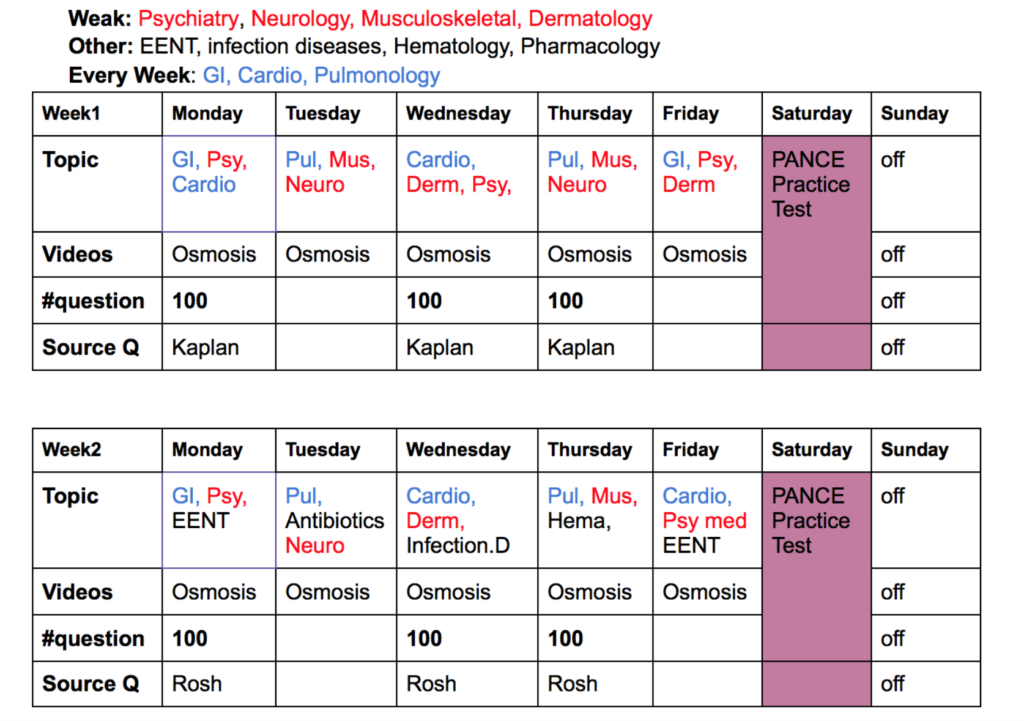
While PACKRAT scores are not applicable to admission selection, they are a strong midpoint predictor of PANCE performance. Multiple predictors were measured: undergraduate grade point average (uGPA), graduate GPA, prerequisite grades, Graduate Record Exam (GRE)-verbal, GRE-quantitative, GRE combined, interview scores, years of health care experience, age, gender, and first-year scores on the Physician Assistant Clinical Knowledge Rating and Assessment Tool (PACKRAT).

The lack of effect modification by demographic and socioeconomic variables suggests that associations do not significantly differ by these metrics.The purpose of this study was to create a model of cognitive and noncognitive measures that could estimate the probability of achieving a given level of performance on the Physician Assistant National Certifying Examination (PANCE).Ī retrospective records review of admissions information used by six universities was conducted to discover which factor had the most impact on the dependent variable of the PANCE score. The significant difference in association identified between programs suggests that the predictive ability of the exam is not uniform. The composite score had the largest magnitudes of association with PANCE scores and odds of LPP. Effect modification was not observed by any investigated variable. Hierarchical regression models and ROC curves identified significant variability in associations among programs. The composite score also strongly predicted decrements in odds of LPP (odds ratio: 0.46 95% CI: 0.38-0.55). The PACKRAT scores were standardized for each year to the national mean and SD.Īdjusted HRMs across 5 programs (n = 1014) found the composite score to have the strongest association, with a 10-percentile-point increase associated with a 22-point (95% confidence interval : 19-26) increase in PANCE score.

Models were adjusted for demographic and socioeconomic variables. Receiver operating characteristic (ROC) curves were used to examine the sensitivity, specificity, positive predictive values, and negative predictive values for various PACKRAT metrics/cut points. Likelihood ratio tests were used to evaluate differences in associations between programs and effect modification by demographic and socioeconomic variables. Linear and logistic hierarchical regression models (HRMs) were used to evaluate associations between PACKRAT metrics and (1) continuous PANCE scores and (2) odds of low PANCE performance (LPP), respectively. It is unknown, however, whether these associations (1) vary across programs (2) differ by PACKRAT metrics (first-year, second-year, and composite score ) or (3) are modified by demographic or socioeconomic variables. The Physician Assistant Clinical Knowledge Rating and Assessment Tool (PACKRAT®) is a known predictor of performance on the Physician Assistant National Certifying Exam (PANCE). Swanchak, PhD, PA-C, is an interim dean for the College of Health and Human Services at Marywood University, Scranton, Pennsylvania. Theresa Riethle, MS, PA-C, is a program director and an associate professor in the Physician Assistant Studies Program at Bay Path University, Longmeadow, Massachusetts. Alison McLellan, MMS, PA-C, is the director of academic education and an assistant professor in the School of Physician Assistant Studies at Pacific University, Hillsboro, Oregon. Hibbard, PhD, is the director of assessment and evaluation and an assistant professor in the Division of Physician Assistant Studies at Duke University School of Medicine, Durham, North Carolina. Garbas, DHSc, PA-C, is an assistant professor in the School of Physician Assistant Studies at the University of Florida, Gainesville, Florida.

Buchs, MHS, PA-C, is an associate director and an assistant professor in the School of Physician Assistant Studies at the University of Florida, Gainesville, Florida. Carey Barry, MHS, PA-C, is an assistant clinical professor in the Northeastern University Physician Assistant Program, Boston, Massachusetts. 1 Trenton Honda, PhD, PA-C, is a division chief and associate professor in the Division of Physician Assistant Studies at the University of Utah, Salt Lake City, Utah.


 0 kommentar(er)
0 kommentar(er)
